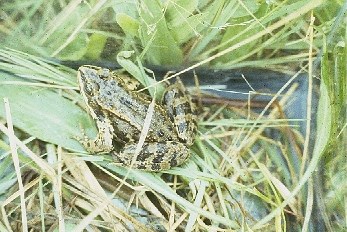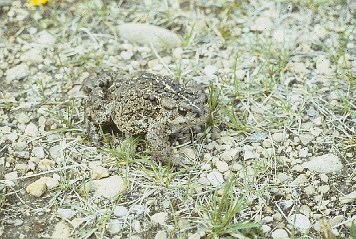
NPS Photo Since Nez Perce National Historical Park is mostly a semi-arid environment, the diversity of amphibians is low, but four species, the long-toes salamander (Ambystoma macrodactylum), western toad (Bufo boreas), Pacific treefrog (Hyla regilla), and American bullfrog (Rana catebeiana) were confirmed during a 2002 inventory. The western toad was found most frequently across all of the park sites that were sampled and is considered a sensitive species by the Bureau of Land Management (BLM) and species of special concern by the Idaho Department of Fish and Game (IDFG). Sensitive species are defined as those identified by national authorities for which population viability is a concern as evidenced by: (a) significant occurrence or predicted downward trends in population numbers or density, and/or (b) significant current or predicted downward trend in habitat capability that would reduce a species' existing distribution. The nonnative, invasive American bullfrog had the second highest abundance. The discovery of so many bullfrogs along the length of Jim Ford Creek at the Weippe Prairie site presents a challenge to managing this site for native animal species. 
NPS Photo When it gets cold, frogs take refuge deep under the mud of the small ponds they call home. During this time they need no food and take in oxygen through pores in their skin. In the spring when they emerge, they go to fresh water where they deposit their eggs. They are highly sensitive to variations in the environment and are susceptible to air, soil, and water pollutants. National Park Service staff are monitoring water quality and treating nonnative weedy plants accordingly. Moist areas on which amphibians depend constitute critical habitats in park ecosystems. Swartz pond at the White Bird Battlefield site proved to be a popular breeding site in 2002 for long-toed salamanders, and adults were documented residing at this site for the duration of the summer. The slough at East Kamiah (Heart of the Monster) offers the best habitats for amphibian creatures and is designated by Idaho as a "watchable wildlife" site. In addition, the tiger salamander (Ambystoma trigrinum) has been observed within five miles of the Bear Paw Battlefield site (Montana), and future detection of this species in the park is promising.
| ||||||||||
Last updated: October 29, 2019
